Did you know Yorkshire Terriers lose 70% less hair than the average dog breed? This surprising fact highlights why these tiny companions are often labeled hypoallergenic. But what makes their shedding patterns so unique?
Unlike most dogs, Yorkshire Terriers have a single-layered coat resembling human hair. Their silky strands grow continuously instead of shedding seasonally. This trait minimizes loose fur around the home, making them popular for families concerned about allergies.
However, their luxurious locks require special attention. Without proper care, tangles and skin issues can arise. This article breaks down everything owners need to know:
Discover how the breed’s history shaped its low-shedding traits. Learn grooming techniques to prevent matting and maintain coat health. Explore how diet and lifestyle impact fur quality. Plus, get actionable tips for at-home maintenance and professional grooming schedules.
Backed by insights from the American Kennel Club and expert groomers, this guide offers science-backed strategies for keeping your Yorkshire Terrier’s coat vibrant. Whether you’re a new owner or considering adoption, these insights will help you make informed decisions about this lively, affectionate breed.
Introduction to Yorkshire Terriers and Their Unique Coats
Originating in 19th-century England, Yorkshire Terriers were bred by Scottish weavers migrating to textile hubs. These industrious workers needed compact dogs to control rodents in mills. Over time, their role shifted from pest control to cherished companions among Victorian elites.
From Mills to Mansions: A Breed’s Evolution
Early Yorkshire Terriers weighed nearly twice as much as modern ones. Selective breeding refined their size and coat texture. By the late 1800s, they became symbols of luxury, adored for their elegant appearance and spirited nature.
Silky Strands and Spirited Personalities
Unlike most dog breeds, Yorkshire Terriers boast a single-layer coat that grows continuously. Their hair resembles fine human strands, reducing shedding but requiring frequent brushing. Many owners opt for a practical puppy cut to minimize tangles while maintaining style.
These confident companions thrive on attention. Their bold personalities often defy their petite frames. Regular grooming sessions double as bonding opportunities, reinforcing trust between pet and owner.
Do yorkies shed? Debunking the Myths and Facts
Many believe Yorkshire Terriers don’t shed at all, but is that true? While these small dogs leave far less hair around homes than most breeds, understanding their unique coat structure helps manage expectations.
The Science Behind Single-Layer Coats
Unlike double-coated breeds with seasonal shedding cycles, Yorkshire Terriers have hair similar to humans. Their single-layer growth pattern means strands fall out gradually as new ones grow in. This results in consistent, minimal fur loss rather than dramatic seasonal “blowouts.”
Consistent Care Over Calendar Changes
Double-coated dogs shed heavily during spring and fall. Yorkshire Terriers maintain steady hair renewal year-round. Their fine strands often intertwine with surrounding hair, trapping loose fur until brushing removes it. This biological trait explains why vacuuming sessions stay manageable for owners.
Regular grooming proves essential. Weekly brushing prevents trapped hairs from forming mats near the skin. Veterinary studies show balanced diets rich in omega-3s also reduce breakage, keeping coats resilient. While no dog is truly hypoallergenic, this breed’s low-shedding nature makes them friendlier for allergy sufferers compared to heavy-shedding counterparts.
Proper care minimizes visible shedding. Owners who combine brushing with quality nutrition typically report fewer tangles and healthier skin. These practices align with recommendations from the National Dog Groomers Association, ensuring coats stay as functional as they are beautiful.
How to Manage and Minimize Yorkie Shedding
What’s the secret to keeping a Yorkshire Terrier’s coat sleek and shedding minimal? Consistent grooming practices tailored to their unique hair structure. Owners who master these methods enjoy fewer tangles and healthier fur.
Daily Brushing Techniques
Start with a pin brush to gently detangle the fine strands. Work from the roots outward, holding sections to avoid pulling. Follow with a stainless-steel comb to catch loose hairs trapped near the skin. This daily ritual prevents mats and distributes natural oils.
Effective Bathing and Shampoo Choices
Bathe your pet every 3-4 weeks using hypoallergenic shampoo. Look for oatmeal or aloe formulas that moisturize delicate skin. Overwashing strips protective oils, leading to dryness and breakage. Rinse thoroughly to prevent residue buildup.
Using Conditioners and Oils
Apply a lightweight conditioner after shampooing to reduce static. For extra shine, massage coconut or argan oil into damp fur weekly. These products strengthen hair follicles, minimizing shedding caused by brittleness.
Invest in quality tools like slicker brushes and detangling sprays. Busy families can split tasks—brush daily, bathe monthly, and visit professional groomers every 6-8 weeks for trims. Avoid human hair products, which disrupt pH balance. With patience, even first-time owners can maintain that signature silky texture.
Understanding Your Yorkie’s Coat: Types and Characteristics
Yorkshire Terriers stand out in the canine world with their distinctive coats. Unlike many dog breeds, their hair grows continuously and lacks an undercoat, creating unique maintenance needs and visual appeal.
Comparing Yorkie Hair to Other Dog Breeds
Most breeds like Golden Retrievers have double coats designed for insulation. These thick layers shed seasonally, leaving fur on furniture and clothing. Yorkshire Terriers, however, possess a single-layer coat resembling fine human hair. This structure eliminates bulk shedding cycles common in breeds such as Huskies or Labradors.
The silky texture resists dirt but requires regular brushing. Heavy-shedding dogs lose fur daily, while Yorkies’ loose hairs often remain trapped until grooming. This difference reduces airborne allergens, making them ideal for sensitive households.
Benefits of a Low-Shedding Coat
Owners appreciate less vacuuming and cleaner living spaces. Reduced shedding also means fewer irritants for allergy-prone family members. Styling versatility adds another perk—many opt for puppy cuts to simplify care while showcasing their pet’s elegance.
Proper grooming enhances natural shine and prevents tangles near the skin. Using breed-specific shampoos and conditioners maintains hair health without stripping essential oils. These practices preserve the coat’s beauty while supporting overall skin health.
Understanding these traits helps owners choose effective tools and routines. The result? A thriving companion whose coat reflects both genetics and dedicated care.
Health and Dietary Considerations to Reduce Shedding
A Yorkshire Terrier’s radiant coat starts from within. Proper nutrition fuels skin health and hair strength, directly impacting shedding patterns. Owners who prioritize dietary quality often notice fewer loose hairs and shinier strands.
Balanced Diet for Skin and Fur Health
High-quality dog food forms the foundation of coat vitality. Look for formulas rich in animal proteins like chicken or salmon. These support hair follicle development. Toy breeds benefit from small kibble sizes to prevent choking.
Portion control matters. Overfeeding can lead to obesity, which stresses skin and fur. Measure meals based on your pet’s age and activity level. Puppies typically need more frequent, smaller portions than adult dogs.
Supplements and Omega-3 Fatty Acids
Omega-3 supplements combat dryness and breakage. Fish oil or flaxseed additives reduce inflammation, promoting resilient skin. Biotin and zinc supplements also strengthen hair shafts when approved by your vet.
Watch for warning signs like excessive scratching or bald patches. Allergies and thyroid issues often manifest through coat changes. Early veterinary consultation prevents minor concerns from becoming chronic problems. For insights into nutritional needs of different dog breeds, explore breed-specific guides.
Consistency yields results. Stick to scheduled feedings and track your Yorkshire Terrier’s response. Over 11-15 years, these habits maintain both coat beauty and overall wellness. A thriving pet starts with thoughtful nourishment.
Practical Home Care and Grooming Tips
Maintaining a Yorkshire Terrier’s coat at home requires strategic tool selection and routine-building. The right approach keeps fur healthy while strengthening the bond between pet and family.
Selecting the Right Grooming Tools
Start with a stainless-steel comb and pin brush. These prevent static while detangling fine strands. For thick coats, a slicker brush gently removes trapped hairs without damaging the skin. Keep detangling spray nearby for stubborn knots.
Choose tools with rounded tips to avoid scratching sensitive skin. Rubber-backed brushes provide better grip during sessions. Store supplies in a dedicated kit to maintain hygiene and accessibility.
Establishing a Stress-Free Grooming Routine
Create a calm environment using soft lighting and quiet music. Begin with short 5-minute sessions, gradually increasing duration as your pet adapts. Always reward cooperation with treats or praise.
Schedule grooming after walks when energy levels are lower. Involve family members to distribute tasks—one person brushes while another offers reassurance. Check for redness or flaking during each session to catch skin issues early.
Consistency matters most. Daily light brushing paired with weekly deep-conditioning maintains coat health. This proactive care reduces professional grooming visits and keeps shedding manageable year-round.
Preparing Your Yorkie for Professional Grooming
Even with diligent home care, professional grooming plays a vital role in maintaining your Yorkshire Terrier’s coat. Recognizing when to seek expert help ensures your pet stays comfortable and healthy.
When to Visit a Groomer
Schedule appointments every six to eight weeks for optimal coat maintenance. Persistent mats behind the ears or under the legs signal it’s time for professional intervention. Groomers use specialized tools to address tangles without causing discomfort.
Prepare your pet by introducing brushing tools at home. Practice handling paws and ears to reduce anxiety. Bring a familiar blanket or toy to the salon for added comfort during sessions.
During visits, expect groomers to trim overgrown hair, clean ears, and check for skin issues. They apply conditioners to enhance shine and prevent breakage. Always inform them about allergies or sensitivities your dog may have.
Choose groomers experienced with toy breeds. Ask for certifications or client reviews to ensure quality care. Partnering with professionals helps busy owners maintain coat health while catching potential problems early.
Consult your vet if you notice unusual shedding or skin redness after grooming. Regular salon visits complement home routines, keeping your Yorkshire Terrier’s signature look vibrant and manageable.
Final Thoughts on Keeping Your Yorkie’s Coat Beautiful
Caring for a Yorkshire Terrier’s coat combines daily rituals with long-term health strategies. Their unique single-layer hair offers low-shedding benefits but demands consistent attention. Regular brushing and quality shampoo prevent tangles while distributing natural oils.
Nutrition plays a vital role in maintaining shine and strength. Diets rich in proteins and omega-3s support skin health, reducing breakage over time. Pair this with monthly conditioning treatments using coconut or argan oil for added resilience.
Proactive owners blend home care with professional grooming every 6-8 weeks. This approach minimizes shedding and keeps coats vibrant. Watch for changes in fur texture or skin sensitivity, consulting your vet if concerns arise.
By prioritizing these practices, families enjoy cleaner homes and happier pets. Your Yorkshire Terrier’s radiant coat becomes a reflection of dedicated care—and a joyful bond between you. Stay curious, adjust routines as needed, and celebrate your companion’s enduring beauty.
FAQ
Are Yorkshire Terriers considered hypoallergenic?
Yes, their single-layer coat produces less dander than double-coated breeds, making them a better option for allergy sufferers. However, no dog is 100% hypoallergenic, as allergies can also react to saliva or skin proteins.
How often should I brush my Yorkie’s coat?
Daily brushing with a stainless-steel comb or slicker brush prevents tangles and distributes natural oils. Focus on areas like behind the ears and under the legs where mats commonly form.
Can diet impact shedding in Yorkshire Terriers?
Absolutely. High-quality foods rich in omega-3 fatty acids (like salmon oil) support skin health and reduce excessive hair loss. Look for brands such as Royal Canin or Hill’s Science Diet formulated for small breeds.

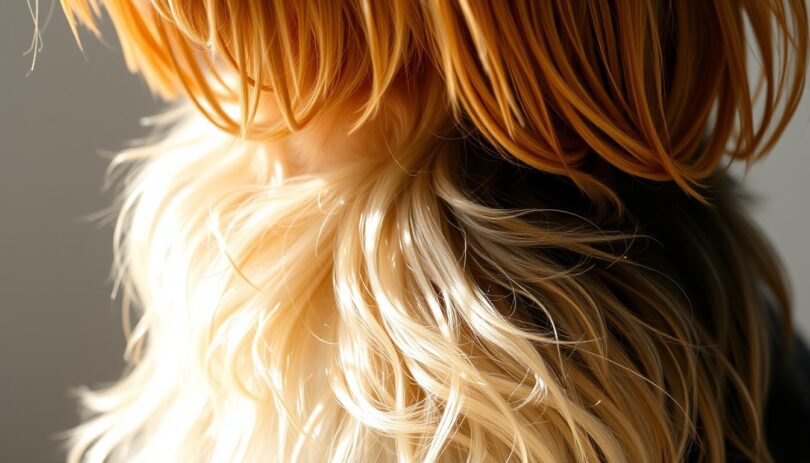
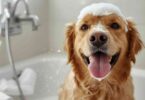
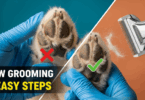

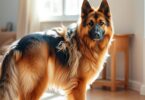
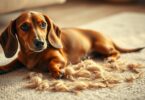


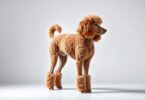
Leave a Comment